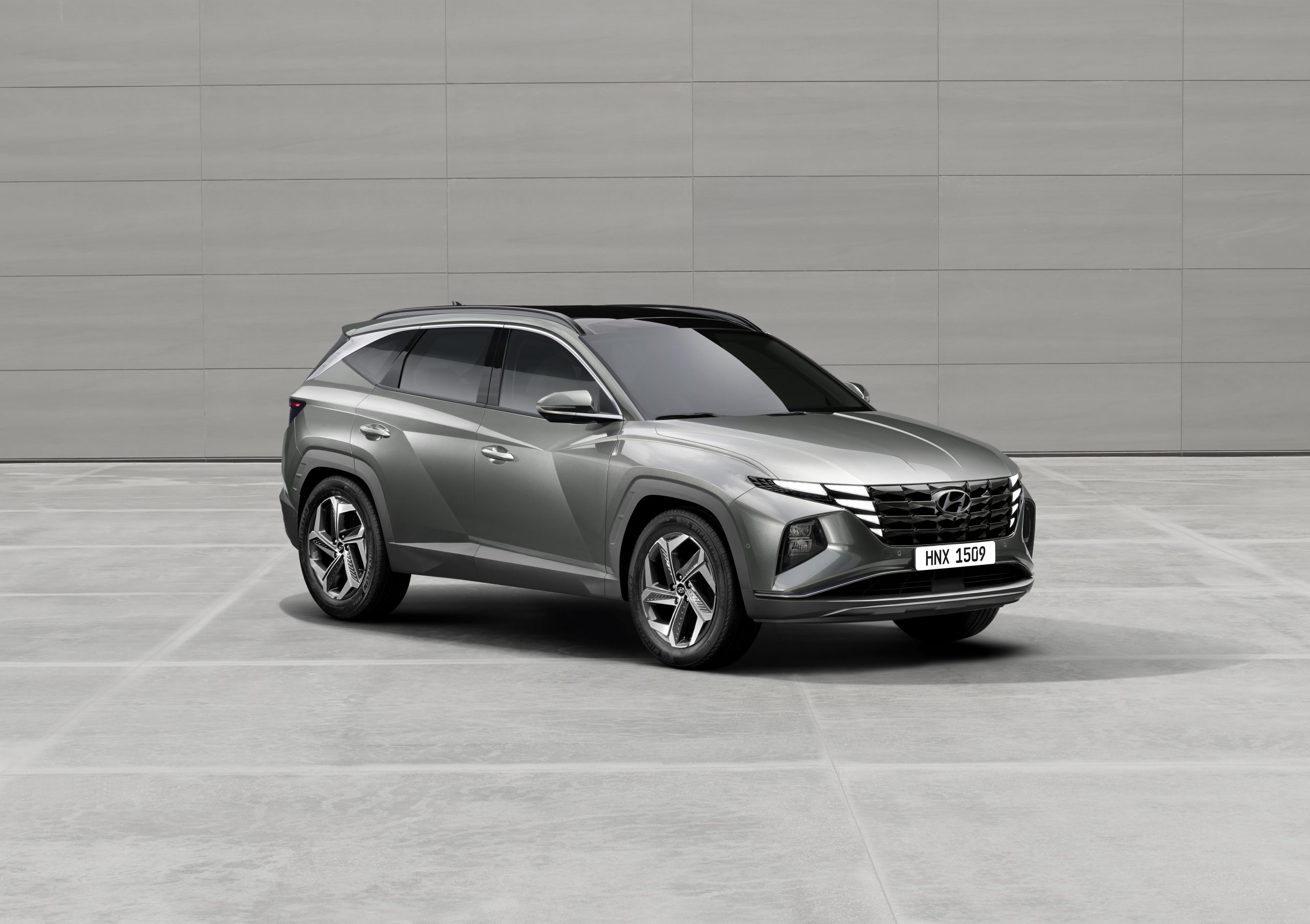Hyundai Motor Company has launched the all-new Hyundai Tucson. The fourth-generation compact SUV (C-SUV) is a global model, with a long-wheelbase variant and a short-wheelbase variant for meeting various customer needs.
“We are thrilled to introduce the all-new Tucson, the latest model in Hyundai’s SUV transformation,” said Thomas Schemera, Executive Vice President, Head of Product Division at Hyundai Motor Group. “This exciting vehicle sets a new benchmark for innovation in its segment, delivering an impressive blend of design, technology, packaging and performance.”
The all-new Tucson will go on sale in the U.S. and other global markets as a 2022 model starting from the first half of 2021.
The Tucson’s new exterior styling embodies what Hyundai designers call ‘parametric dynamics’ with kinetic jewel surface details. Tucson’s integration of technology and design is most evident, Hyundai says, in its half-mirror type daytime running lamps (DRLs) that are assimilated within the parametric grille, only revealed when illuminated.
The kinetic design theme carries over to the rear where the full-width taillamp incorporates half-hidden triangular shapes that are only visible when lit, echoing the DRL on the front.
Tucson gasoline models offer the following seven exterior colors: White Cream, Phantom Black, Shimmering Silver, Nocturne Gray, Amazon Gray, Flame Red and Intense Blue, six of which are new for Tucson. Hybrid and plug-in hybrid models offer the following four colors: White Cream, Phantom Black, Shimmering Silver and Intense Blue, three of which are new for Tucson. The SUV’s interior comes in black or gray tones in either cloth or leather material.
Tucson’s interior offers a broad dashboard that blends with the doors and a vertically oriented, fully integrated center fascia descending to the console. Ambient mood lighting is adjustable to 64 colors in 10 levels of brightness.
The interior offers three new technologies, including a vertically stacked, dual 10.25-inch full-touch screen exempt of hard buttons, a multi-air ventilation system and an open, hoodless digital gauge cluster. Tucson’s second-row seats will feature fold-and-dive functionality for optimized reconfiguration capability between passengers and cargo. Its cargo volume will provide 38.7 cubic feet of usable space.
Tucson offers both Smartstream 2.5-liter, direct-injected, four-cylinder, gasoline powertrain and a 1.6-liter, turbo, direct-injected, hybrid or plug-in hybrid powertrains. The 2.5-liter engine has an estimated output of 190 hp and an estimated torque rating of 182 lb.-ft. This engine is coupled to an 8-speed automatic transmission for excellent efficiency and acceleration.
The 1.6-liter hybrid powertrain produces an estimated 180 hp, with a combined powertrain output of 230 hp. It also produces 195 lb.-ft. of torque from the gasoline engine and 258 lb.-ft. of torque from the combined hybrid powertrain. This new powertrain uses Continuously Variable Valve Duration (CVVD) technology that manages valve opening duration for optimal power, efficiency and emissions.
Hyundai applied its E-Handling technology for HEV and PHEV models to help improve steering response and directional stability when cornering or in adverse driving conditions. The vehicle is also equipped with Hyundai’s HTRAC all-wheel-drive system. While HTRAC previously supported Eco/Comfort/Smart/Sport driving modes, the latest version adds Mud, Sand and Snow in some markets.
The Hyundai SmartSense safety feature suite includes: Highway Driving Assist (HDA), Forward Collision-Avoidance Assist (FCA) with pedestrian detection, Lane Keeping Assist (LKA), Lane Following Assist (LFA), Blind-Spot View Monitor, Blind-Spot Collision Warning (BCW), Surround View Monitor, Reverse Parking Collision-Avoidance Assist (RPCA), Remote Smart Parking Assist (RSPA), High Beam Assist (HBA), and Driver Attention Warning (DAW). The all-new Tucson is available with advanced technology features including Blind-Spot Collision-Avoidance Assist (BCA) with Rear Cross-Traffic Collision-Avoidance Assist (RCCA) Advanced Smart Cruise Control (SCC) with Stop and Go and Safe Exit Warning (SEW).
The Tucson will also use Hyundai’s Digital Key, an app that turns the customer’s smartphone into a smart key. It uses Near Field Communication (NFC) to detect authorized users, so they can operate their vehicle without a physical key present. Customers can lock and unlock their vehicle, activate the panic alert and start the engine and its climate control system from up to 90 feet away.
Tucson’s technology integration reaches its apex with the top-trim model’s 10.25-inch full-touch navigation screen. The navigation system offers split-screen functionality that enables multi-tasking capabilities, coupled with enhanced voice recognition.
Tucson offers an 8-inch color touchscreen coupled with wireless Apple CarPlay and Android Auto, as well as a BOSE Premium audio system. A 10.25-inch full-touch navigation screen is available with the top-trim model.
Tucson’s new Car-to-home feature allows customers to control smart home appliances from the car. They can turn on the air conditioner at home before their arrival on very hot, humid summer days. Furthermore, Tucson’s new Multi-Command function allows customers to “warm-up the car”— including heating system, heated steering wheel and seat warmers—with a single voice command.
For the all-new Tucson, Hyundai plans to offer N Line globally with a launch date to be announced later.
